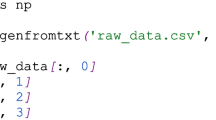Abstract.
Initiation of rapid discrete flexion movements is significantly altered when a secondary rhythmic movement is performed simultaneously with the same limb; the onset of a stimulus-evoked discrete movement tends to occur time-locked to the oscillation: i.e., the rhythmic movement entrains the discrete response. This nonlinear interaction may reflect a specific principle of coordination of motor tasks which are simultaneously executed with the same effector. This part II of a tripartite research report on such single-muscle multiple-task coordination investigates the contribution of the dynamic properties of the muscle and its reflex circuitry to phase entrainment. Assuming a simple threshold-linear relationship between the control signals generated by the central nervous system and the observable kinematic and electromyographic signals, a secondary rhythmic movement will cause an additional phase-dependent delay between the central “go” command and the first observable change in actual kinematics of the compound movement. Several indicators for such threshold-linear interaction are derived and tested on real data obtained in psychophysical experiments. Four healthy subjects performed rapid lateral abductions of the index finger in response to a visual “go” signal. During a portion of the experiments, subjects produced additional low-amplitude oscillatory movements before stimulus presentation with either the same finger (one-handed task), or with the index finger of the other hand (two-handed task). Results showed phase entrainment and modulation of reaction times when the cyclic and the discrete movements were simultaneously executed by the same finger. But there was no entrainment in the bimanual execution of the tasks. The model was capable of reproducing the observed effects. It is concluded that coordination of voluntary movements which are concurrently performed by the same effector involves specific discontinuous operations, which represents an essential part of the mechanism of motor coordination. Phase entrainment reflects this characteristic discontinuous behavior of the lower stages of motor execution and does not necessarily require nonlinear interaction of motor commands at higher levels of motor processing.
Similar content being viewed by others
Author information
Authors and Affiliations
Additional information
Received: 5 September 2001 / Accepted in revised form: 19 December 2001
Rights and permissions
About this article
Cite this article
Staude, G., Dengler, R. & Wolf, W. The discontinuous nature of motor execution II. Merging discrete and rhythmic movements in a single-joint system – the phase entrainment effect. Biol Cybern 86, 427–443 (2002). https://doi.org/10.1007/s00422-001-0307-9
Issue Date:
DOI: https://doi.org/10.1007/s00422-001-0307-9




